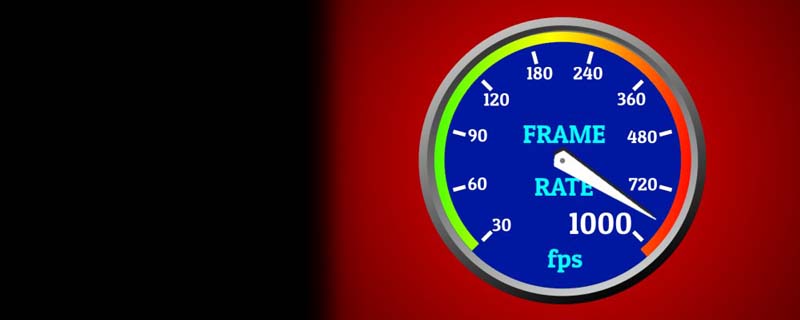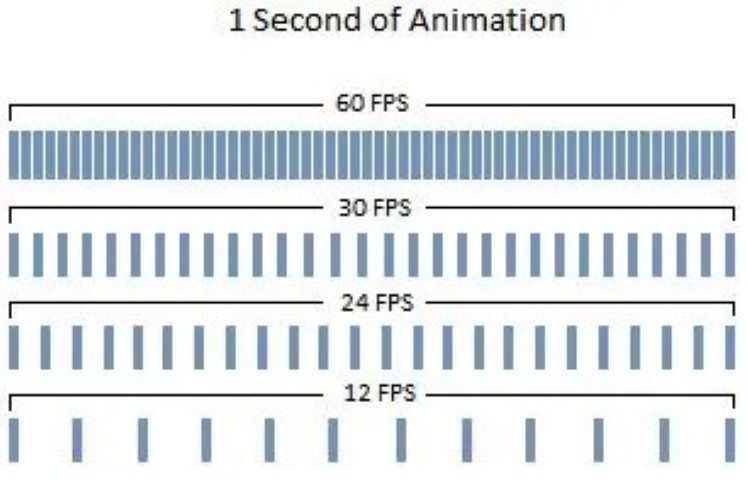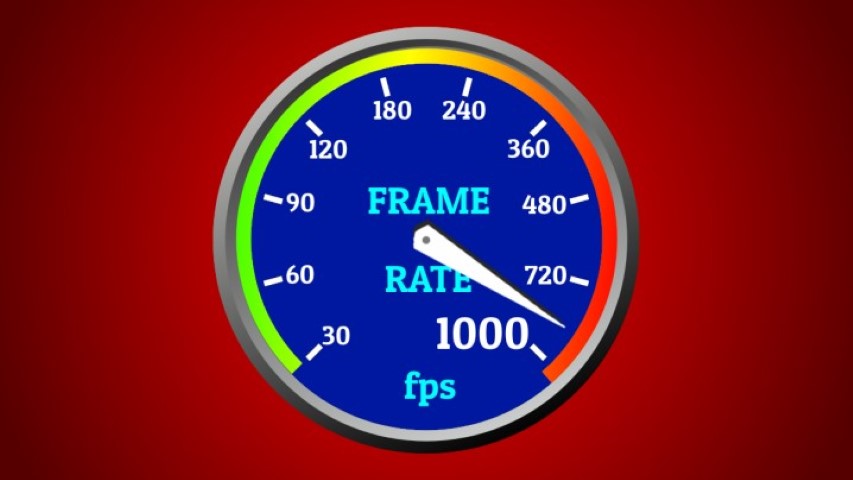
When you look at reviews or hear discussions about GPUs the focus is always about the frame rates delivered. While frame rates are an important consideration for a gaming build, the level of focus put on them is often overblown or even outright misguided at times. I thought it would be a good idea to take a moment, step back and look at frame rates and real impact and meaning.
Frame rates are literally how many times per second your computer will generate a new frame for display. Remember, a computer game is displayed basically as a VERY fast flip book. The idea is the more frames per second you generate the smoother the game play experience. While this basic premise is true there are some caveats and a point of diminishing return in many cases.
The easiest play to start is play smoothness. More frames do mean a smoother play experience, however not all frame rate increases are created equal. The issue with frame rates is the human eye does not see in frames, it sees in shifts and changes. Therefore, old movies at 30 FPS or even lower appeared smooth to us, the playback was 100% steady, no dips or climbs and so the eye and brain interpreted this as smooth. The same can be found in many video games, having a consistent frame rate, one where the highs and lows are very close together, can give a better experience than a higher frame rate but with the highs and lows being wider apart. (This is not wild speculation; this information comes from discussions with a couple of Optometrists and Ophthalmologists)
Higher frame rates can be a good thing however, there is a limit, if the frame rates exceed the refresh rate of the display you now introduce tearing, which for more immersive games can lead to a less than great gaming experience. The simplest solution is use Vsync but this comes with it’s own set of issues such as introduction of latency to the game. You can always buy a higher refresh rate display but now you have increased the cost and in many cases not really gotten a better gaming experience. This also starts you down a rabbit hole as you buy a higher refresh rate display then you need a higher performance GPU to push the higher frame rates.
Then of course there is the simple fact that not all games benefit from higher frames rates. Take for example a game like Civilization. If you can hit a steady state of frame rate, even at lower rates the game will appear very smooth. What about a game like Fallout 4? This game introduced a different issue where the game engine could produces higher frame rates but it often broke the physics engine and this meant anything much above about 75 FPS actually made for a worse play experience. There are in fact many games and game genres where increasing the frame rates past a certain point has no meaningful impact to the game play experience.
The truth is using frame rates alone to compare GPUs is like deciding what car you want to buy purely by knowing the top end speed it can achieve. This kind of car shopping does not work for most people as it does not consider the way the vehicle will be used. Also, pure top end car testing is done on a track and in an environment that is outside the normal usage of most cars. The same is often true in GPU reviews with cards and CPUs being mismatched in an effort to show maximum difference between the cards but not show a realistic, in many cases, usage scenario.
The good news, for consumers, is that we have reach a place in the market where certain levels are solidly provided. To figure out what level of class GPU you need you just need some basic information.
First what monitor are you using? If you’re going to run on a 1080P 60hz display, then buying a 6950XT is quite frankly a HUGE waste of money. The lineup for AMD based GPUs and even their competition, has a solid stratification for buying a new GPU. For 1080P the 6600 series is the current best choice. For 1440P the 6700 series and for 4K the 6800XT and up.
Next what type of game will you be playing? If the game is solo play based, then the good news is that once you hit about 100 FPS you have achieved a great gaming experience and moving past this often has diminishing returns. If you are playing an MMO, the same numbers come into play pretty quick, the 100 FPS range is a solid place to be.
The higher frame rates really are most impactful when playing competitive shooters or at the professional level of gaming. The reason for this is back to our flip book discussion. The more frames generated means the more opportunities for the computer to see your input and insert that input into the action. This is a very simplified explanation, but it works for most people. If there are 100 frames then your input has 100 chances to be seen, if there are 240 frames then 240 chances and thus a quicker potential response time to your input. For competitive games this can have a real impact, for solo play games the impact is often unoticed.
So, you might be asking, if frame rates are not the major factor in determining a GPU choice, then why do reviewers focus on it? The answer is that is the easiest function to show product differences. Framerates can be measured and quantified. The experience you have in your game play cannot as each person is looking for something different. Person A for example might be fine with 60 FPS and 1080P while person B might want a quicker response for their game and thus need a higher frame rate, Person C might not care about frame rate but want 1440 for the resolution and so on. Experience when gaming is a HIGHLY individualized metric and thus not quantifiable.
So where does that leave the consumer? As noted above, know what you’re looking for. Know the type of games and the monitor you will use and then buy toward building a balanced system using that information. The market has changed a lot over the years with the need to upgrade every new product cycle no longer being important. Often a well-balanced system can give you a few years of great gaming skipping a generation or two. This means you no longer need to “overbuy” to avoid a rapid upgrade cycle.
Use the reviews on GPUs as a starting point. Look at the data and focus on the data the comes the closest to applying to what your needs are. Remember that the data presented is specific scenario testing, it gives you a starting point for consideration. In reviews look for other considerations when determining the product you will buy, things like build quality.
Having the fastest car amongst our friends might be a nice ego boost, but if you use it to drive across town to work and get groceries then you likely wasted a lot of money on performance that exists purely for bragging rights. The same is true with buying the fastest GPU you can get, unless you are going to utilize all that graphics horsepower, you’re basically buying for bragging rights and not a great gaming experience.





















